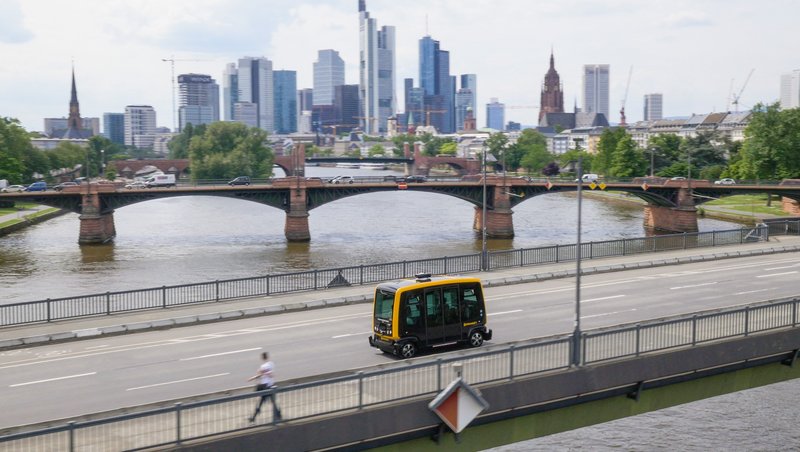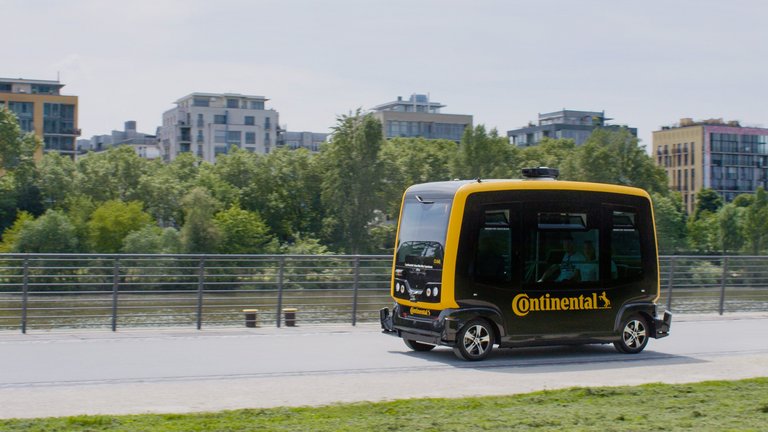Continental advances with the demo vehicle CUbE the development of technologies for driverless vehicles
- Continental is developing solutions for driverless vehicles in urban areas.
- Contributing to modern mobility, robo-taxis provide a solution for congestion, accidents, contaminated air and parking problems in cities.
- In the future, Continental will test and research driverless passenger transportation at its Frankfurt location with the CUbE (Continental Urban mobility Experience) demo vehicle.
- Robo-taxis as a feel-good cocoon: Interiors support individualization and functional integration in surfaces.
Frankfurt, Germany, July 20, 2017. More and more people are flocking to cities. According to a 2014 UN study, two-thirds of the world’s population will be living in cities by 2050 – and they will also be driving their cars there. However, it would perhaps be more accurate to say that they’ll be trying to drive their cars there, because global traffic jam statistics tell us that individual “mobility” in cities will be severely restricted. The current average speed in London, for example, was only 7.8 miles per hour in 2016. Accidents, emissions, loss of time, notorious parking problems and stress are the ever-present consequences of this concentration of traffic in urban areas – and in view of the fact that the world’s megacities are growing, this is one of the reasons why future mobility is radically evolving. The technology company Continental is using its corporate expertise in automation, new mobility concepts, and electrification to develop solutions for the urban transport of the future and for a better quality of life in cities.
The future of individual mobility in cities is autonomous and electric, and it will become part of the shared economy,” says Frank Jourdan, member of the Executive Board of Continental AG and Chairman of the Chassis & Safety Division Management Board. “This is why we’re developing cross-divisional solutions for driverless robo-taxis – and we will be starting with practical testing this year. Continental has therefore access to an almost complete product portfolio of its own sensors, actuators, control units and communication and networking technology.”
According to a study by the consulting company Roland Berger, driverless vehicles will account for around a quarter of transportation services by the year 2030 – and this potential revolution in the world of the automotive industry was a clear motive for Continental to initiate a corporation-wide development project named “Self-Driving Car”.
Driverless mobility: autonomous - electrified - and shared
Continental has built a demo vehicle to enable driverless mobility, especially in cities. The vehicle, named CUbE (Continental Urban mobility Experience) will start its trials at Continental’s Frankfurt location, which contains a typical city infrastructure such as street signs, cross-traffic, pedestrian crossings and curbs, providing optimum conditions for a complex and therefore realistic route. Many aspects of the technology used in the vehicle are based on the driver assistance systems and sensors that are already installed in today’s serial production vehicles, but new technologies are also used, such as the laser sensor. Based on this expertise, these systems will be further developed to control the vehicle completely autonomously. “The trials will be used to identify all the essential technical requirements that enable safe, driverless passenger transport in urban areas,” says Dr. Andree Hohm, Head of the Self-Driving Car project at Continental. “This helps us to find answers to questions about our product strategy and to deliver leading technology for individual mobility in the future – including driverless systems.”
Thanks to the CUbE, Continental is among the pioneers in crucial technology for robo-taxis. “In recent months, the topic has really moved into the limelight,” says Jourdan. “This tells us that we have chosen exactly the right time for our bold approaches to practical testing, enabling us to pave the way towards the future.” Driverless vehicles will use a great number of technologies with which Continental has vast experience – from sensors and control units to software algorithms, braking systems and powertrain technologies.
New questions and new solutions
“Among the many practical topics we are currently exploring are the adequate design of redundant brake systems and the optimal composition of the sensor platform for a robo-taxi,” says Hohm. Hohm is convinced that robo-taxis offer a smart solution to meet the challenges of urban mobility for cities that are increasingly choking on the current form of private transport. “It’s much more intelligent operating driverless vehicles as often as possible, than having countless private cars that are often at a standstill up to an average of 23 hours a day occupying valuable space – and that’s space that could perhaps be used for parks and playgrounds.”
In Berlin, for example, approximately 3.5 million citizens spend an average of 70 minutes a day in traffic – and this includes all the modes of transport used, including public transport. In everyday Berlin life, the car is simply a little-used short-haul vehicle, one that is parked for most of the time. During a trip, an average of 1.3 persons sits in the car. The average daily distance traveled by a Berlin citizen in traffic – distributed over an average of three trips a day – is a total of 20.2 kilometers. On-call, driverless robo-taxis would be an ideal solution for this mobility behavior, if the result was much less individual traffic in the city.
Robo-taxis and cars of the future become a feel-good cocoon
The trend toward autonomous or driverless vehicles will have significant impacts on vehicle interiors. “Cars will be much more than just a means of transport in the future. The focus will shift more toward privacy, relaxation, communication, and work. The purpose of the interior will therefore be different in the future. People in the car will be doing things other than driving it,” says Dr. Alexander Jockisch, head of business development and marketing for surface materials in Continental’s division ContiTech. The consequence of this will be that the creativity and innovativeness of designers, engineers, and stylists will be in greater demand in the future. Major opportunities for interior materials arise as a result of their options for personalization, their design freedom, the variety of color designs and the ability to integrate functions for example light integration with translucent surfaces.
Whereas passenger compartments today are dominated, for instance, by the need for the steering wheel and the instrument panel to be configured as functionally as possible, tomorrow these will be less and less important considerations. Accordingly, even greater emphasis will be placed on coziness and comfort in the passenger compartment. And Continental’s interior materials will continue to have a role to play in conveying these feelings to the occupants. “Our foils and trim and upholstery materials offer enhanced aesthetics, haptics, and durability,” emphasizes Jockisch. In its Eco range, Continental also satisfies the requirements for environment-friendly, low-emission, health-friendly and resource-friendly interiors. Customers also want surfaces that are scratch- and stain-resistant and easy to clean. These properties reliably protect the surfaces against unsightly signs of wear and ensure that the new-car feeling and sense of comfort are retained as long as possible.
Continental will also demonstrate the CUbE during the International Motor Show, IAA in Frankfurt/Main (Hall 5.1. Booth A07 / A08).




